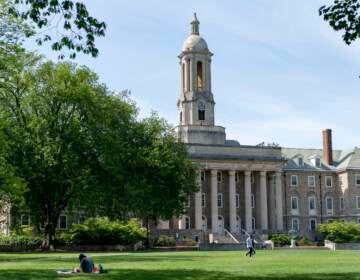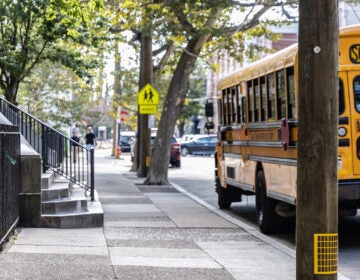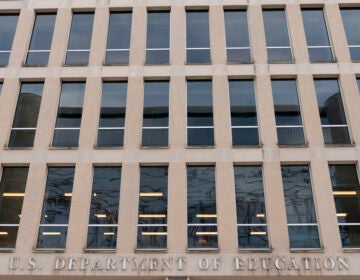Gov. Shapiro drafting plan to help Pennsylvania higher ed system that’s among the worst in affordability
This year's state government spending of about $2 billion on higher education is about the same as it was 15 years ago.

File photo: Pennsylvania Gov. Josh Shapiro arrives before President Joe Biden speaks in Blue Bell, Pa., Friday, Jan. 5, 2024. Shapiro's administration says he plans next month to propose steps toward fixing a state higher education system that's among the worst in the nation in affordability. The administration didn’t release many specifics Friday, Jan. 26, and says the Democratic governor will give more details in his Feb. 6 budget address. (AP Photo/Matt Rourke, File)
Gov. Josh Shapiro plans next month to propose steps toward fixing a higher education system in Pennsylvania that is among the worst in the nation in affordability, his administration said Friday.
The administration didn’t release many specifics and said the Democratic governor would give more details in his Feb. 6 budget address.
By just about every measure there is, Pennsylvania is ranked at the bottom among states in the level of higher education aid, size of student debt and affordability of its colleges. Pennsylvania spends less per capita on higher education aid than any other state except New Hampshire, Shapiro’s administration said.
This year’s state government spending of about $2 billion on higher education is about the same as it was 15 years ago.
In his budget, Shapiro will propose “significant” aid for state-owned universities, community colleges and their students, the administration said.
The 14 state-owned universities and 15 independent community colleges should be united under a governance system that improves coordination between the schools and limits the competition and duplication between them, the administration said.
After that, Shapiro wants to cut tuition and fees to no more than $1,000 per semester for Pennsylvania students who attend a state-owned university and have a household income under the state median of about $70,000.
The administration could not immediately say how much money that would require, or where that amount of aid would place Pennsylvania in state rankings.
Eventually, the state would develop an aid formula rewarding higher education institutions for factors including growing enrollment and graduation rate, the administration said.
Schools would get incentives to recruit and support students to complete degrees and earn credentials in growing fields and fields with workforce shortages, the administration said.
The ideas sprang from a working group of college and university presidents that were assembled last year by the Shapiro administration.

Get daily updates from WHYY News!
WHYY is your source for fact-based, in-depth journalism and information. As a nonprofit organization, we rely on financial support from readers like you. Please give today.





